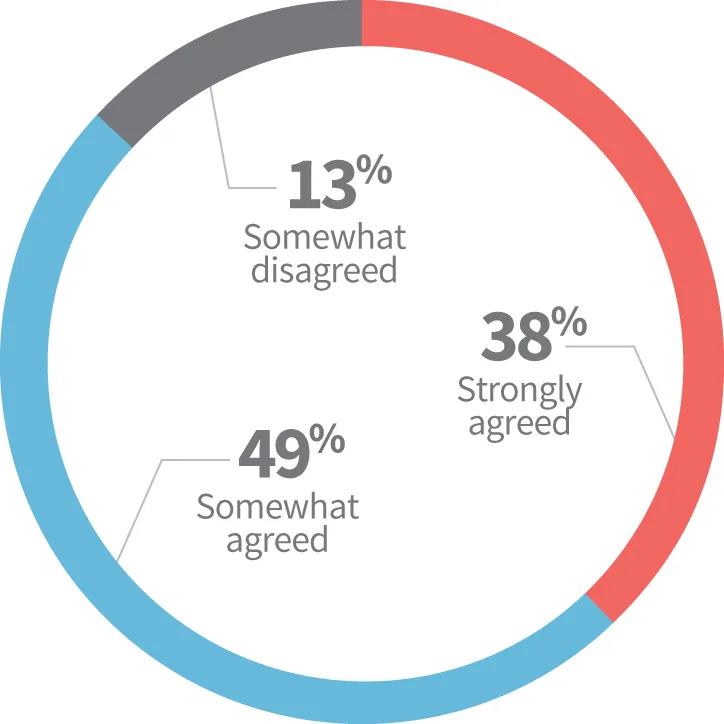5 Signs of a Dysfunctional Veterinary Team
Cyndie Courtney, DVM, The Jerk Researcher, Lawrence, Kansas

Team members who work on a positive team are creative and loyal, produce more, and feel satisfied and successful.1 Those who feel supported, valued, and heard respond with commitment and dedication to their work and the team.
Unfortunately, veterinary medicine is not free of dysfunctional teams. Such teams not only impact the individual members but also affect the practice culture and climate, which can influence the client and patient experience. Addressing challenges head-on helps transform a struggling team into one that is highly productive and satisfied.
Patrick Lencioni, author of the best-selling The Five Dysfunctions of a Team, says, “Successful teamwork is not about mastering subtle, sophisticated theories, but rather about combining common sense with uncommon levels of discipline and persistence.”2
Here are 5 common signs of a dysfunctional team:
Working in Silos
Examples
In-Group Bias (ie, an evaluation of one’s own group as better than others3): Team members who do not work at the front desk criticize an inappropriately scheduled appointment.
Task Inflexibility: A team member delegates a 1-minute task instead of completing it herself.
Cause
The cause is often the not-my-job mentality, which Lencioni suggests occurs when a team does not have a team-focused, results-based goal.4
Addressing Siloing
Set a clear, results-based goal for the whole team (eg, increasing client retention by 50% this year). Show team members how they contribute to reaching the goal.
Cross-train team members to make their jobs more interesting and improve team flexibility.5
Related ArticlesToxic Superstar Employees: Should They Stay or Should They Go?Am I the Toxic Team Member?Creating a Toxic-Free Practice Environment
Blind Agreement
Examples
Unilateral Decision- Making: Team members trust the veterinarian knows best and do not question any suspected mistakes or poor choices.
Groupthink (ie, the tendency of a decision-making group to filter out undesirable input so a consensus may be reached, especially if it is in line with the leader’s viewpoint6): Every team member agrees with a new policy and no one asks questions or raises concerns or objections.
Causes
Teams without trust cannot be vulnerable enough to share their real thoughts, feelings, and boundaries, which can lead to blind agreement, according to Lencioni.7
Team members may fall into blind agreement when the team’s power differentials make it difficult to challenge authority.8
Addressing Blind Agreement
Take the Mayo Clinic’s approach to team medicine and allow every team member contributing to a patient’s care to provide feedback and suggestions.9
Use checklists to ensure the whole team is adhering to practice policies.8
Appoint a devil’s advocate to prevent groupthink and premature or faulty decision-making.10 Conflict is necessary to build a healthy practice team and helps team members make good ethical decisions, test their assumptions against reality, and consider multiple options.
Establish open-door policies and create spaces (eg, team-directed meetings, anonymous suggestion boxes) where team members feel safe to offer opinions.11
Exhaustion
Examples
Every Case Is an Emergency: The whole team always works through the lunch break.
Never Saying No: A team member takes on extra shifts and works late frequently, no matter the personal cost.
Causes
“[Veterinarians] appear to have an inherent difficulty saying no to others,”12 said psychologist Kathleen Ayl, who suggests this difficulty may be related to the values of caring that led them into the profession in the first place.
Veterinary caretakers find setting reasonable personal and professional boundaries difficult because of the compassion and perfectionism that made them successful during their training and early work in the profession.12
Addressing Exhaustion
Prepare for predictable heavy demand by analyzing and adjusting workflow to help prevent exhaustion.13
Help team members who have trouble saying No set reasonable personal and professional boundaries.14
Learn to recognize signs of potential distress in team members and help them avoid stressful situations.15,16
Stagnation
Examples
Stalled Ideas: One team member shares new ideas, but her teammates do not help institute the ideas and nothing happens.
Treading Water: The practice stays essentially the same and some team members leave because they have no opportunity for growth.
Causes
Individual team members are often fearful because of previous failed attempts to make changes, and they may be unmotivated to institute new ideas.17
When the benefits of or needs for change are not communicated effectively, powerful teammates may not buy into change, leading to stalled ideas.17
Addressing Stagnation
Provide team members with forums where they can discuss ideas and how the ideas fit into the practice’s overall mission.
Be sure all team members have opportunities for professional growth.

Source: Expenses. Benchmarks 2016. Columbus, OH: WTA Veterinary Consultants & Veterinary Economics; 2016:57.
Aggression
Examples
Physical Aggression: An angry team member throws things across the room.18
Relational or Verbal Aggression: A team member persists in correcting teammates in front of clients.19
Causes
Tensions arising from a lack of trust and fear of conflict can cause aggression.20
Aggression can become an outlet for unresolved conflict.
Addressing Aggression
Provide constructive venues where team members can vent concerns (eg, team meetings, private conflict mediation), and share resources on workplace violence prevention.21
Establish no-tolerance practice policies for harassment and abuse.
Conclusion
Like symptoms of a disease, these behaviors are signs of deeper issues. The underlying problems should be identified and addressed to heal the practice and help team members thrive.
“Ironically, teams succeed because they are exceedingly human,” Lencioni says. “By acknowledging the imperfections of their humanity, members of functional teams overcome the natural tendencies that make teamwork so elusive.”2